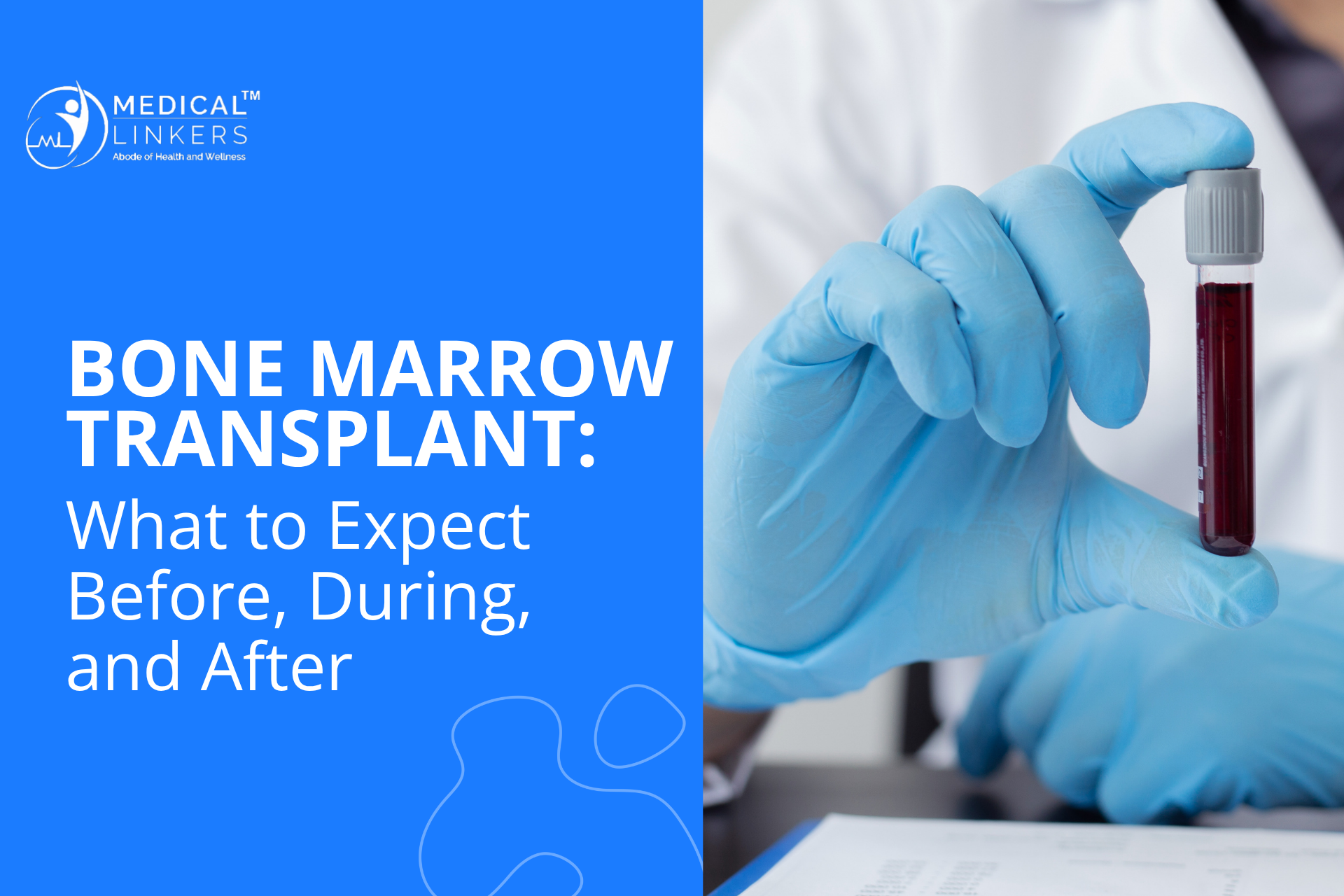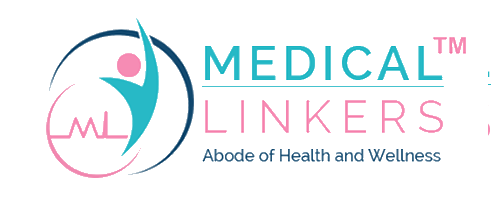Bone Marrow Transplant: What to Expect Before, During, and After
Bone marrow transplant (BMT) is a life-saving procedure that replaces damaged or destroyed bone marrow with healthy stem cells. For patients battling leukemia, lymphoma, severe anemia, immune disorders, and some rare genetic conditions, a bone marrow transplant can offer not just hope—but a cure.
If you or a loved one is considering this treatment, especially abroad as part of a medical tourism plan, it’s crucial to understand what the journey entails. From preparation to post-transplant recovery, this blog will walk you through what to expect before, during, and after a bone marrow transplant, while also highlighting why many patients choose to travel for this complex procedure.

What Is a Bone Marrow Transplant?
Bone marrow is the soft, spongy tissue inside your bones that produces blood-forming stem cells—essential for generating red blood cells, white blood cells, and platelets.
A bone marrow transplant, also called a stem cell transplant, is performed when the patient’s own marrow is either diseased or destroyed due to high-dose chemotherapy or radiation. Healthy stem cells are introduced into the body to rebuild the marrow and restore the immune system.
Types of Bone Marrow Transplants
Autologous Transplant
The patient’s own stem cells are harvested and reintroduced after intensive treatment.
Allogeneic Transplant
Stem cells come from a matched donor (related or unrelated). Sometimes umbilical cord blood is used.
Haploidentical Transplant
A newer method using partially matched family donors—particularly useful when a perfect match isn’t available.
Why Patients Travel Abroad for Bone Marrow Transplants
Medical tourism has become an increasingly common choice for BMT patients due to:
Cost-effective treatment in countries like India, Turkey, and Mexico
Access to JCI-accredited hospitals and advanced technology
Shorter waiting periods
Availability of international donor registries
Personalized care and extended post-treatment rehabilitation options
Countries like India offer bone marrow transplants at 40–60% lower costs compared to the U.S. or Europe, without compromising on quality.
Before the Transplant: Preparation and Planning
1. Diagnosis and Evaluation
Before proceeding with a BMT, a team of oncologists and hematologists will perform thorough testing, including:
Blood tests
Bone marrow biopsy
Imaging (CT/PET scans)
Genetic typing (HLA typing for donor match)
Heart and lung function tests
If you're planning the procedure abroad, your medical reports will be reviewed remotely by the transplant center before admission.
2. Donor Matching
If an allogeneic transplant is required, the next step is to find a donor. Donor matching is based on human leukocyte antigen (HLA) typing, and the best match is usually a sibling. If no family match is found, the hospital may search global donor registries.
Some countries, like India, also maintain cord blood banks and haploidentical transplant capabilities, increasing match availability.
3. Pre-Transplant Conditioning
Conditioning prepares your body for the transplant by destroying diseased cells and suppressing the immune system to reduce graft rejection. It typically includes:
High-dose chemotherapy
Radiation therapy (in some cases)
Side effects during this period may include nausea, fatigue, mouth sores, and increased infection risk. You will be hospitalized and monitored closely.
During the Transplant: The Procedure Itself
Despite its complexity, the actual transplant is similar to a blood transfusion.
Day 0: Transplant Day
Stem cells are infused into your bloodstream via a central line (a tube inserted into a vein in your chest or neck). This process usually takes a few hours and is painless.
The stem cells travel through your bloodstream to your bone marrow, where they begin to multiply and form new, healthy blood cells—a process called engraftment.
Post-Infusion Hospital Stay
After the transplant, you’ll remain in a specialized, sterile hospital unit for 2 to 4 weeks. This is the most critical phase, as your immune system is extremely weak.
Daily care includes:
Monitoring for infections, bleeding, and graft-versus-host disease (GVHD)
Blood and platelet transfusions, if needed
Antibiotics, antivirals, and antifungals to prevent infection
Nutritional support and IV fluids
You’ll be isolated from outside visitors, and strict hygiene protocols will be followed to avoid infections.
After the Transplant: Recovery and Life Ahead
1. Engraftment and Early Recovery (First 30 Days)
Engraftment usually occurs within 2–3 weeks post-transplant. Signs include a gradual rise in white blood cell count. Once this begins, your body starts to rebuild its immune defense.
However, it can take months for your immune system to fully recover. During this time, you must:
Avoid crowds and sick people
Eat only sterilized, well-cooked food
Follow hygiene protocols meticulously
Visit your doctor regularly for tests
2. Graft-versus-Host Disease (GVHD)
GVHD is a common risk in allogeneic transplants where the new immune cells attack the host’s body. It can range from mild skin rashes to serious organ damage.
Doctors manage GVHD with immunosuppressants, steroids, and supportive care. In many cases, mild GVHD can actually be beneficial, as it helps fight remaining cancer cells.
3. Long-Term Follow-Up (3 Months to 2 Years)
Even after discharge, follow-up visits are crucial. They typically include:
Blood tests to monitor recovery
Bone marrow biopsies
Assessment of organ function
Re-vaccinations for childhood diseases (since your immune memory is wiped out)
Emotional and mental health support is also essential. Fatigue, anxiety, and fear of relapse are common, but with good counseling and family support, patients adjust well.
Tips for International Patients Planning a BMT Abroad
Choose an accredited center with experience in BMT and international patient care
Request cost estimates and timelines in advance
Ensure availability of a caregiver to stay with you during recovery
Check visa policies for long medical stays (many countries offer special medical visas)
Plan for post-treatment accommodation if extended stay is advised
Check donor availability and compatibility services offered by the hospital
At Medical Linkers, we assist you at every step — from document processing and hospital coordination to logistics, language support, and post-treatment follow-up with your home doctor.
Success Rates and Survival
Bone marrow transplant success rates depend on:
Patient’s age and overall health
Disease type and stage
Donor match quality
Pre-existing infections or organ damage
In general:
Autologous BMTs have survival rates of 60–90%
Allogeneic BMTs show 40–70% survival, depending on the condition
Early diagnosis, a good donor match, and excellent post-transplant care significantly boost the chances of a positive outcome.
In Conclusion: A Second Chance at Life
Undergoing a bone marrow transplant is a major decision—but for many, it represents a second chance at life. While the journey can be long and challenging, the results can be nothing short of miraculous. Thanks to advancements in global healthcare and the growth of medical tourism, this life-saving procedure is now within reach for more people than ever before.
If you or a loved one is exploring BMT options abroad, our medical travel experts can help you choose the right hospital, manage documentation, coordinate with international donor banks, and ensure your care doesn’t end when the hospital stay does.
Ready to Explore BMT Options Abroad?
Get in touch with our team to receive:
Personalized transplant center recommendations
Cost estimates from top JCI-accredited hospitals
End-to-end assistance from diagnosis to recovery
Let us help you navigate your path to recovery with dignity, comfort, and world-class care.
